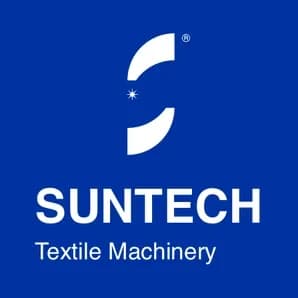In the traditional textile industry, fabric quality inspection is an indispensable process. However, it has long been regarded as an "efficiency black hole" - relying on manual labor, slow speed, and prone to errors and omissions, it not only consumes a lot of manpower costs, but also often becomes a key bottleneck affecting the delivery cycle. Faced with the fast-paced and time-consuming textile supply chain, the traditional way of inspecting fabrics has not kept up with the pace.
For this reason, the emergence of AI fabric inspection machines has become a disruptive tool for textile companies to improve production line efficiency and control quality costs. Compared with manual labor, the AI system can increase the inspection speed by more than 5 times, and the accuracy is more stable. This is not only an equipment upgrade, but also a "qualitative change" in productivity.
So, how does the AI fabric inspection machine achieve all this? What exactly has it changed? Let's take a closer look.
The Efficiency Bottleneck of Traditional Cloth Inspection
The manual cloth inspection method usually relies on experienced quality inspectors to observe defects, color difference, flower skipping, weft skew, and other problems with the cloth with the naked eye. Although the old employees are skilled, the overall process faces several unavoidable limitations:
Slow speed: an operator usually checks a maximum of 20 meters of cloth per minute.
Fatigue affects judgment: long-term work is prone to omissions, especially in night shifts or mass production.
Unable to manage data: It is difficult to leave traceable records during the manual inspection process, and it is difficult to hold people accountable and review the quality.
The inspection results rely on human subjective judgment, and it is difficult to unify the standards.
These problems combined make traditional cloth inspection a major invisible obstacle to the release of the entire factory's production capacity.
AI Fabric Inspection Machine: Why can the Speed be Increased by 5 Times?
AI cloth inspection machine is not simply "replacing manual labor". It realizes high-speed, high-definition, automatic identification and classification of cloth surface defects through the integration of multiple cutting-edge technologies. The following are the core factors for its speed increase:
High-Speed Industrial Camera, Real-Time Shooting
Modern AI cloth inspection machines are equipped with high-frame-rate industrial cameras, which can capture dozens of high-definition images per second to ensure that no details are missed during the high-speed operation of the cloth. This means that the running speed of the whole machine can be increased to more than 100 meters per minute, which is 4 to 6 times the manual speed.
AI Image Recognition Algorithm, Autonomous Judgment of Defect Type
Through large-scale training data models, AI can identify more than a dozen common textile defects, such as oil stains, flower skipping, creases, color difference, etc. It will not get tired, will not "miss", the detection accuracy is stable, and the false detection rate is much lower than that of manual labor.
Automatic Marking and Output Report, Eliminating Repeated Manual Processes
The detection results are displayed on the screen in real time, and the defect location is marked by the automatic marking system. The system also automatically generates a test report, including defect type, location, total cloth length, etc., to facilitate subsequent re-inspection, cutting, and customer delivery. The entire process no longer requires dedicated personnel to record, mark, and enter, greatly reducing manpower waste.
In Addition to Speed Improvement, what Other Advantages are There?
In addition to high speed, the AI cloth inspection machine also brings improvements in the following aspects:
Unified quality standards: unified system judgment standards to avoid human bias;
Data traceability: the quality data of each roll of cloth is automatically archived for easy after-sales management.
Labor savings: one person can manage multiple devices at the same time, greatly reducing the need for quality inspection personnel.
Intelligent upgrade: some equipment supports continuous learning and optimization, and the more it is used, the more accurate it becomes.
Convenient docking with other production line equipment: It can be integrated into the automatic packaging line and MES system to promote full process automation.
Which Companies are Most Suitable for Introducing AI Cloth Inspection Machines?
Fabric suppliers with tight delivery deadlines and complex product categories.
Export-oriented companies that focus on brand image and customer experience.
Factories with tight labor or high-quality inspection mobility.
Enterprises that are promoting the construction of digital factories and smart workshops.
Factories with quality inspection bottlenecks have long faced rework, returns, and customer complaints.
Especially in mass production, the advantages of AI cloth inspection machines will be multiplied.
Conclusion
Today's textile factories are competing not only for production capacity, but also for delivery, stability, and cost control. In such an industry context, AI cloth inspection machines are no longer "optional", but indispensable "basic equipment" in automation transformation.
It helps you save labor, improve efficiency, and ensure quality, turning the cloth inspection process from an "inefficient bottleneck" to a "production booster". When the inspection speed is increased 5 times, not only quality inspection speeds up, but the entire production rhythm will be accelerated, truly realizing the productivity revolution of textile enterprises.
Make efficiency visible and quality controllable-AI cloth inspection, the future is here.







